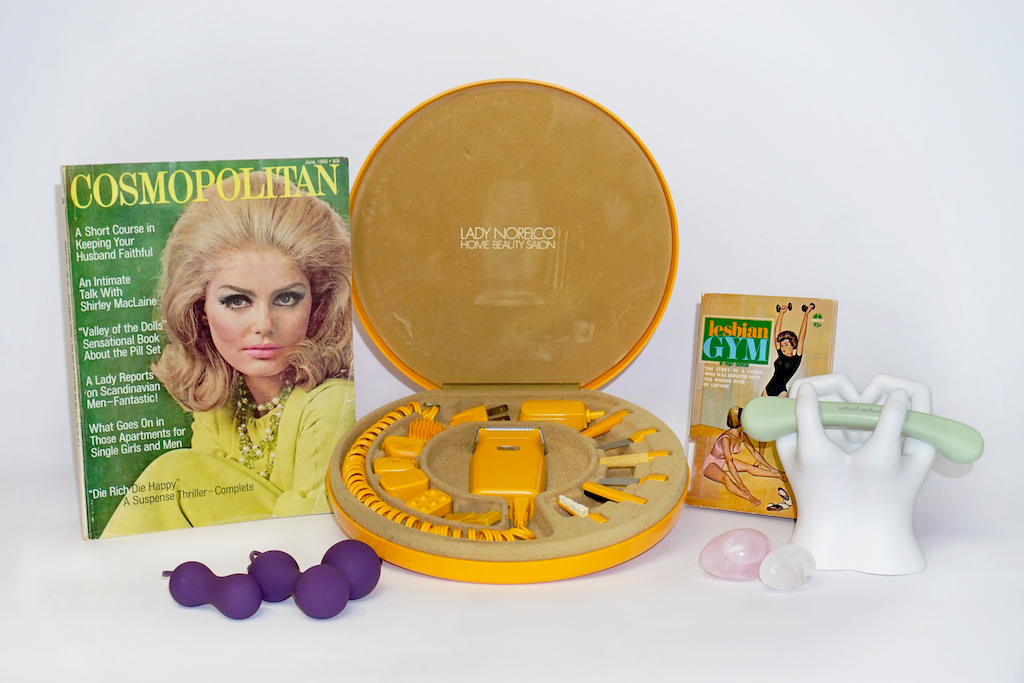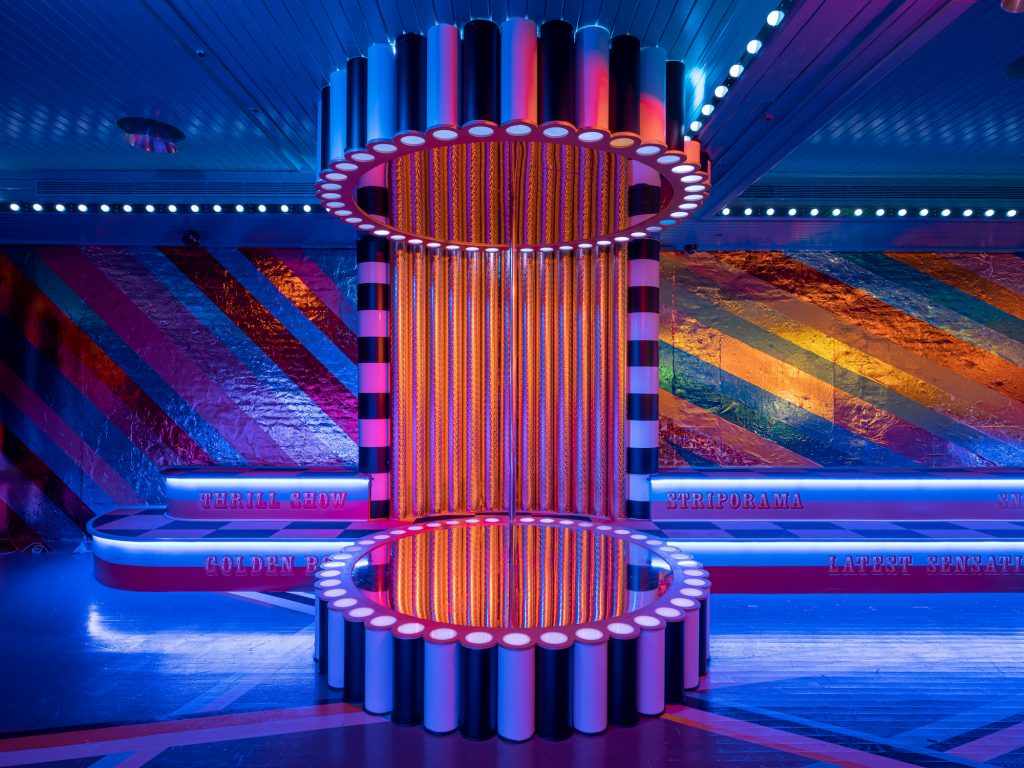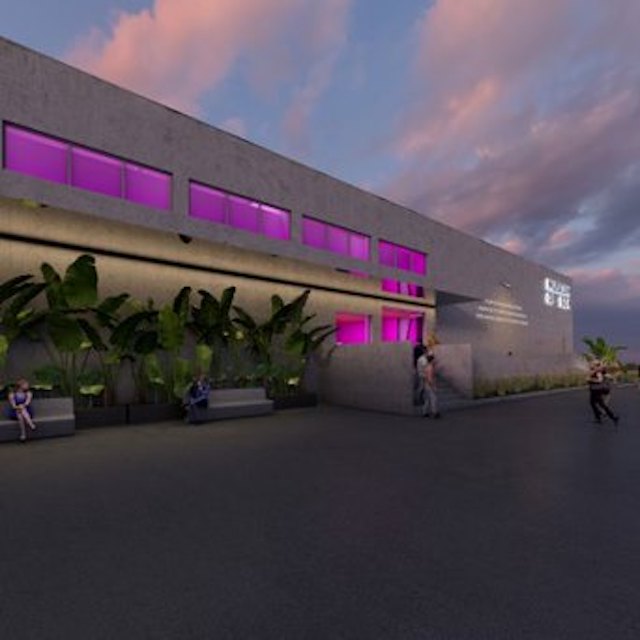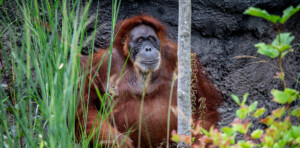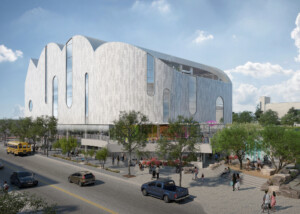One exciting piece of news for fans of immersive and experiential art attractions is the imminent opening of the Museum of Sex’s new venue in Miami. New York’s Museum of Sex is the world’s foremost museum of the cultural significance of human sexuality.
The mission of the Museum of Sex is to conserve and display the history, evolution, and cultural relevance of human sexuality. It is dedicated to promoting public understanding, conversation, and involvement and creates exhibitions, publications, and programmes to bring the best of current scholarship to the widest possible audiences.
The museum opened in October 2002. Its inaugural exhibition, NYCSEX: How New York Transformed Sex in America, investigated the sexual subcultures of the city’s past and present. It also explored the means by which these subcultures influenced the development of modern attitudes about sex and sexuality. In the creation of this exhibition, the Museum of Sex brought together an advisory board of leading scholars and historians.
The idea behind the Museum of Sex
When Daniel Gluck, its founder, graduated with a combined degree in Fine Arts from Wharton School and the Graduate School of Fine Arts in Pennsylvania in the early 90s, he was very inspired by the academic Camille Paglia:
“She was pretty on fire at the time,” he tells blooloop. “She was getting a lot of coverage, and she blew me away with her take on popular culture and the classics, and her perspectives on sexuality. But at the time, starting as an undergrad, I’d started a few stepping stone software companies”
He was in the software business until around 1996 or 97:
“I then sold the company. I didn’t become a software millionaire, but I had some capital and was figuring out what I was going to do with my life.”
What happened next, he explains, was serendipitous:
“I was at a bar in the Lower East Side Manhattan in New York, which was just gentrifying around that time. I was hanging out with some friends. One of the guys had sold a magazine and was trying to think about what he wanted to do. I said, ‘Why don’t you start a UFO Museum?’ – just as a joke. His girlfriend at the time had just been to Amsterdam. She said in her dry, snarky way – she’s very funny – ‘You should start a sex museum.’”
The concept takes off
She meant something that was a ridiculous tourist attraction – a joke, because that was the mood of the conversation. However, for Gluck, the idea resonated.
“To me, who had been extremely interested in Camille Paglia, it seemed so obvious that this could be such an important place. I thought, ‘My God, why isn’t there a world-class Museum of Sex?’ I had a friend at the time, Alison [Maddex], who was Camille’s girlfriend. I reached out to her with the idea, and her mind was blown.”

More importantly, from Gluck’s perspective, Paglia thought it was an incredible idea:
“I had a creative and an entrepreneurial streak,” he says. “But I had never done anything like this. I had never run a museum.”
Getting validation
A number of threads, he explains, were converging:
“At the same time as this idea in a bar, I had been looking for real estate in New York for about a year and a half. In 1998, there was a big collapse in the Chinese stock market. After spending a year and a half looking to buy a brownstone in the West Village, live on one floor and rent out the other – a purely lifestyle-oriented thing – suddenly this property on Fifth Avenue and 27th Street became available, and it was extremely affordable. We acquired it.”
Following the decision to explore opening a Museum of Sex, Gluck reached out to a number of academics and scholars:
“I didn’t want to pursue something like this by the seat of my pants. I needed validation from legitimate people that we thought would appreciate this. We put together a proposal with ideas for half a dozen exhibitions, with Camille’s oversight, and were in the midst of reaching out to all these academics, some of whom were celebrities.
We had connected with people like Arianna Huffington, Sandra Bernhardt, and Todd Oldham, the fashion designer, who had all lent their name to the project.”
Museum of Sex comes to Manhattan
At around that time, in the late nineties, the city of New York was in the middle of cleaning up Times Square.
“One of the people we spoke to leaked the story about the Museum of Sex to the New York Post. Suddenly, in the middle of Giuliani cleaning up Times Square, there was a Museum of Sex opening up in Manhattan with a real location.”
It became a huge international story:
“I remember at the time that it broke, Camille and Allison were on a plane, flying across the country from California, where they had been for a lecture. I was fielding calls from every major publication globally, saying ‘No comment’, which made everyone crazy.”
Designing the building and building a collection
Everything, he says, came together at this one point:
“Everything gelled, the idea itself, the real estate, and then this press attention gave us a sort of validation, which just increased, month after month.”
There was no capital to build anything. However:
“An architectural firm called SHoP Architects, which would later design the Barclay Stadium, wanted to design the museum.”
The firm subsequently went on to become internationally renowned:
“This was at the very beginning of their career,” Gluck comments. “I explained that we had no money to build a museum. They ended up coming up with a concept that won the Progressive Architecture Award in 2000, and suddenly that became the front page of the New York Times art section.
“Peter Norton, the software billionaire, who is a big deal in the art world, read the story and donated artwork to us. We just kept getting validation after validation. It started out from a very serendipitous conversation and just grew. But from the beginning, from that bar conversation, I had seen what this thing could be, in terms of its importance. Most museums don’t really cover the subject in a way that we think is frank and honest.”
Museum of Sex fills a gap
There have, he concedes, been exhibitions over the years:
“There was a show at the MET on the eroticism of Dali’s work, but it was tame. They hardly touched on his personal eccentric life, let alone the explicit nature of his works.”

“When we started working with museums, their curatorial teams were very eager to share their collections with us because they knew that the subject wasn’t really being tackled with any seriousness. We understood that the typical museum structures are very bureaucratic. They have boards that require a lot of consensus, and they don’t want to cause controversy. So, they’re not really willing to be daring, or to take a certain amount of risk.”
There was, he realized, a gap in the cultural landscape that the Museum of Sex would fill perfectly:
“We could collaborate with other museums and other collections, because, obviously, it’s a big subject.”
The museum’s mission
The mission of the Museum of Sex, which opened on October 5, 2002, is to preserve and present the history, evolution and cultural significance of human sexuality.
“We also did an exhibition on animal sexuality,” he comments. “It was all about non-reproductive animal sexual behaviour: sex for pleasure or for enjoyment. We put together a group of some of the best zoologists and animal researchers in the country at the time.
“We had this platform where we talked about homosexuality and masturbation, and animals seeming to have sex for pleasure. This is a subject that you don’t hear about on nature shows.”
“Then, of course, we’ve done many art exhibitions, as well as social history exhibitions. We are not just about art or science, but about all of it. That’s why, as a museum, we really are a Kunsthalle model, rather than a collection, although we do have a significant collection.”
The collection is at the service of the storytelling and the variety of topics covered:
“If we want to do exhibitions on sex and religion, on the Weimar era, let’s say, on different artists, no one museum is likely to hold objects encompassing that range of subjects. So, while we will collect items, it’s more about being a space to tell the story.”
Bringing together different stories and perspectives
It is about telling stories from a range of perspectives, too. Gluck brings in scholars and designers to create great exhibitions. He explains:
“In our mission statement, we also talk about the importance of open discourse, and free speech. That’s critical. Nowadays, I feel there are a lot of loaded issues. If our muse is Camille Paglia, you can guess where our point of view is. We’re old-school liberals, in a sense. We want to talk about everything, and don’t want puritans of any stripe telling us what we can talk about.”
Clarifying this, he adds:
“We want people who are open to discourse. People can be surprisingly puritan. It’s unbelievable: who could have seen it coming? This is more puritan than the Puritans, which would make a great subject for an exhibition.”
The private museum model
“There are a few things of which we are, in a sense, the progenitor,” Gluck says. “Before our museum, I wasn’t aware of any private museums in America that were actually private ventures.”
There are attractions, of course:
“Ripley’s Believe it or Not is not totally unlike a museum,” he concedes. “But if you look at our 45 or so exhibitions, we are working with the best academic scholars, artists, and designers. We have developed world-class exhibitions that could run at institutions of the level of the Met and the MoMA. We really are, I think, the first private museum.”
“After we opened, suddenly, others started to appear. We have the Spy Museum, for instance. The Mob Museum opened in Lower Manhattan. The notion of what it means to be a museum evolved. You have the Museum of Ice Cream, which is more like a selfie space. There is the Museum of Illusion.”
Exhibitions at the Museum of Sex
There is something unique in how the Museum of Sex created its spaces:
“We didn’t just have white walls in the gallery space, and artefacts on those walls. We totally rebuilt and re-themed every exhibition.”
The museum’s inaugural exhibition, NYC Sex: How New York City Transformed Sex in America, was designed by Casson Mann. This explored the histories of prostitution, white slavery, birth control, fetish, sexual freedom and obscenity laws, acknowledging recent developments with a look at the city’s response to the AIDS crisis, the Giuliani-era transformation of Times Square, and the emergence of a new underground.
“We had initially wanted to look at sex in America,” Gluck says. “Once we realised that subject was just way too big, we focused on New York. A lot of New York history was being exploded at the time. Edwin G. Burrows and Mike Wallace wrote the book Gotham: A History of New York City. [Martin] Scorsese was doing Gangs of New York. There was a real New York moment.
“We had opened up with a lot of the same academics and scholars on our advisory board talking about the importance of New York City as a sexual space that influenced America.”
Experiential attractions
That show was followed by Sex Among the Lotus: 2500 Years of Chinese Erotic Obsession, a panorama of Chinese erotica. He explains:
“We wanted to do the opposite side of the world, and we wanted to start with exhibitions that were not focused on art, to make sure people did not assume that we were an erotic art museum. That show was a total rebuild of the space. Suddenly, the space went from white suspended walls to dark spaces with bamboo curtains that you had to sweep aside to discover the artefact. There were bird sounds and water running.
“I would say that this was the early stage of creating experiential attractions because all our shows had this immersive quality.”
Super Funland
Describing the genesis of the museum’s latest exhibition, Super Funland: Journey into the Underground Carnival, he says:
“We wanted to do a show with physically immersive art that had to do with eroticism. It was going to be called The Sexual Playground. We had a number of different ideas, and then it went on hold. We have had many ideas over the last 20 years that are on our shelves waiting to be turned into exhibitions. That one had been sitting on the shelf for about three or four years.”
At this point, the museum also began to work with Bompas and Parr:
“They had this idea that we eventually gave a form. Their vision was to create a cocktail where we would get celebrities to crush grapes with their bare feet. We would preserve the juices, and then serve them in cocktails. People would be able to get a Kate Moss crushed grape cocktail.
“In the end, we couldn’t find celebrities who would do it. So, we turned to iconic fetishised individuals. We were developing this idea when Sam Bompas suggested a bouncy castle of breasts. We realised it would be perfectly suited for our exhibition on the sexual playground, which we wanted to create with a number of artists as something immersive. Bompas and Parr then pitched us a show that traced the erotic lineage of the carnival, the fairground.”
Working with Professor Vanessa Toulmin, the founder and research director of the National Fairground Archive at the University of Sheffield, the team then created a backstory.
Opening doors to more advertising channels
They continued to develop the concept:
“We knew, even before opening, that this was going to be our mass-market vehicle,” he comments. “This was before experientials were a thing.”
Funland also offered a way for the Museum of Sex to navigate a specific challenge:
“For years, we had trouble advertising on the New York City subway system,” Gluck explains. “They wouldn’t let us use our name: Museum of Sex. They even refused to consider the Museum of S*x or Museum of S**. Nothing. We were marketing in other ways, of course, but the subway is a leading method. For the first seven years, we couldn’t use it.”
“When Funland opened, we realised we finally had this vehicle with mass appeal that we were willing to take this risk on, and which they allowed us to advertise.”
It became a sensation.
“We got millions of views on our website, and on our video of the bouncy castle of breasts.”
Museum of Sex grows
Growth, which had been sitting at a satisfactory annual rate of between 11 and 13%, escalated. A few years later, having worked to accumulate the capital, the museum opened Super Funland, a larger space in the museum:
“This was three months before COVID hit,” Gluck remarks. “But we had learned that we believed in this project. What we were doing was so outrageous and amazing and hilarious. It had this combination of wit and eroticism; it had it all. We felt very bullish about it, and we were proven correct – it was a big success.”
“We had evidence for a three-month period from the official launch that this thing was what we thought it was. Then COVID hit.”
That short period had given them the confidence to use the downtime to plan for expansion:
“We were working very hard throughout. We found the Miami location, and now we’re opening in Miami.”
New venue in Miami
The new venue is a repurposed warehouse in the Allapattah district. This location is home to contemporary art spaces including Superblue, the Rubell Museum Miami and Jorge Pérez’s El Espacio 23.
The Museum of Sex has partnered with internationally renowned architectural firm Snøhetta to lead the design.
Gluck comments:
“I tell people it’s going to be 10 times better than New York. Not even one or two times better: 10 times better. It’s a totally different thing. It’s on a massive scale. New York has about 20,000 square feet in a tight-ish space: nine-to-10-foot ceiling height spaces in a four-storey building. You have to walk upstairs.”
“This is going to be in a 32,000-square-foot space with 20 and 30-foot soaring ceilings. Our galleries will be normal, high galleries, but Super Funland is going to be this insane, much bigger space. It’s going to have things like a 40-foot mermaid tank. Katherine Crockett will be choreographing that.”
Crockett, who danced and toured internationally as principal dancer with the Martha Graham company for 21 years, starred as The Queen in the Off-Broadway immersive theatre hit, Queen of the Night, for which she created and choreographed her role.
The Museum of Sex treats topics with humour
The combination of sex and humour is, he believes, beguiling:
“Humour is an aphrodisiac: who hasn’t been charmed by someone funny? And the amusements are unique. They’re all custom, bespoke, one-of-a-kind pieces. We’re not just taking something and painting it a different colour.”
TripAdvisor reviews attest to the fact that visitors enjoy the tension between the serious treatment of certain subjects, and the outrageous fun underpinning others.
“A few years ago we talked to Chris Wink, one of the founders of the Blue Man Group. He said he’d been watching us to figure out how we were going to find that balance where we’re not too dry and academic, yet not too crass and earthy.”
It is a hard line to negotiate, but the Museum of Sex appears to have done so:
“The way we did it was to create designed experiential spaces from the beginning,” he explains. “They were designed pre-experiential experiential spaces. Now, with the existence of Super Funland, we can get more academic, and create more beautiful, classic, traditional spaces, because you are then going to move on to have this outrageous experience.”
Maintaining a balance
Maintaining that balance between the facets of sexuality is key, he emphasises:
“We had a very dark exhibition on abortion without access in 2020.”
Barcelona-based artist Laia Abril’s exhibition at the Museum of Sex, On Abortion: And the Repercussions of Lack of Access, employed a documentary style to chronicle obstacles to reproductive choice, and the outcomes of those obstacles, across the world, invoking a quietly reflective mood of contemplation from an audience that might have been expecting something bawdier.
People who were coming assuming they were going to be jumping on the bouncy castle of breasts were faced with this subject, and they were like: ‘Wow, I didn’t expect this’…people are drawn by one aspect and then go on to experience others, as well.
“People who were coming assuming they were going to be jumping on the bouncy castle of breasts were faced with this subject, and they were like: ‘Wow, I didn’t expect this’. It’s actually very exciting, and they feel better off for experiencing it.
“I feel we are accomplishing our goals with this strategy, where people are drawn by one aspect but then go on to experience others, as well. This is true in the art world, too. We did an important show with the artist Leonor Fini, an important contemporary of the Surrealists.”
Uncovering lesser-known artists
The Museum of Sex‘s exhibition Leonor Fini: Theatre of Desire, 1930-1990 was the first American museum survey of the work of Argentine-Italian artist Leonor Fini (b. 1907, Buenos Aires, Argentina–d. 1996, Paris, France) ran from September 28, 2018 – March 4, 2019.
Fini, an iconoclast, was raised by brilliant women. She rejected the label ‘woman artist’, and never considered herself a Surrealist, since she loathed the misogynist views of André Breton, the leader of the Surrealist movement.
The Weinstein Gallery describes her as ‘the most ferociously and heroically independent woman artist of the 20th century’. It also points out that despite her rejection of Surrealism, her works have been included in nearly every major Surrealist exhibition from 1936 to the present.
“We have so many ideas for shows that could have a certain level of importance in challenging discourse as well as being instrumental in the discovery and rediscovery and discussion of certain artists.
“We’re very excited about the future of this, and we feel the potential is endless.”
The Museum of Sex’s expansion goals
The opening of the larger Miami location marks an extension of the potential of the Museum of Sex to explore all the facets of sexuality. Super Funland is the experiential, joyful key, unlocking access to all areas, from the sacred to the profane, the academic to the earthy.
Gluck comments:
“We create at this level of human entertainment and joy for an adult audience. Super Funland, we feel, is a great mass-market vehicle. We want to expand and grow and take it to other places around the world.
“Our goal is to open in London next if Miami is successful, and then another US-based location, which is to be determined.”
There is, he says, a British feel to the humour:
“That’s essentially what we’re channelling – Monty Python-esque humour, with a high design aesthetic. We’re excited.”



